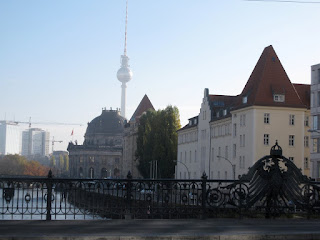





On Sunday morning we drove to Riano just 20 minutes outside Rome, we went to Wendy Holloway's B&B located on a hill which has an amazing panoramic view of the Lazio Province and Rome in the distance, truly breath taking. Wendy has been living in Italy for 25 years and for the last 10 years has developed her business which is called ''Flavor of Italy'' see her wonderful website at www.flavorofitaly.com
It is a very easy drive from Rome on the Flaminia, you can also take the metro and then transfer to the regional train, getting off at Montebello, no more than 25 minutes from Piazza Flaminia in central Rome.
The Canadian Club of Rome had organized a cooking class for Sunday morning, Wendy thought up the menu and it was fun and wonderful.
We made several dishes, fresh anchovies, a wonderful little white fish marinated in orange juice, red and yellow roasted bell peppers in a sauce of anchovies, capers and olive oil, fresh pasta ravioli with a stuffing of ricotta and zest of lemon, the sauce was a light butter and cream with lemon zest, Salmon steaks Sicilian style, which is sweet and sour sauce, raisins and balsamic vinegar, Risotto with chanterelles mushrooms and mild Italian sausage meat, and a fig torte. She picks hundred of figs off her trees and then removes the stem and simply freezes them during the winter, so she can use them in recipes and they are as delicious as if just picked off the tree. We had a nice white wine from the Lazio region to accompany.
Each one of us made one dish and others then help out or observed with Chef Wendy encouraging us along.
Will and I have done many cooking courses around the world, the most memorable being in Vietnam 3 years ago in different cities, Hanoi, Hue, Hoi An, Saigon, and also in Thailand. It is always nice to learn how to do a dish and to learn the different flavors and mix of ingredients. You learn to appreciate the culture of the country, not just by visiting sites but also how food mixes with the culture and what is important to the people. Rice in Asia is very important as bread is in Western culture, olives to the Greeks and olive oil to the Italians, dates to the Arabs. You gain a better appreciation all around.
Will is good at making pasta and he made the ravioli. The anchovies though most people think that it is a salty unpleasant fish is in fact if fresh, a very nice white fish and very good grilled or eaten as we did marinated. The caper and anchovy sauce I made for the roasted peppers, I washed the salt off the capers and simply added them in the blender to the olive oil and anchovies.
Pasta has a range of cooking time from 8 minutes for raviolis and spaghetti to 12 minutes for bigger pasta like fettuchini, of course in Italy all pasta is cooked aldente (to your teeth), which is the way we like it now.
We are planning to return to ''Flavor of Italy'' B&B on 31 January for a weekend of cooking classes and olive oil tasting.













